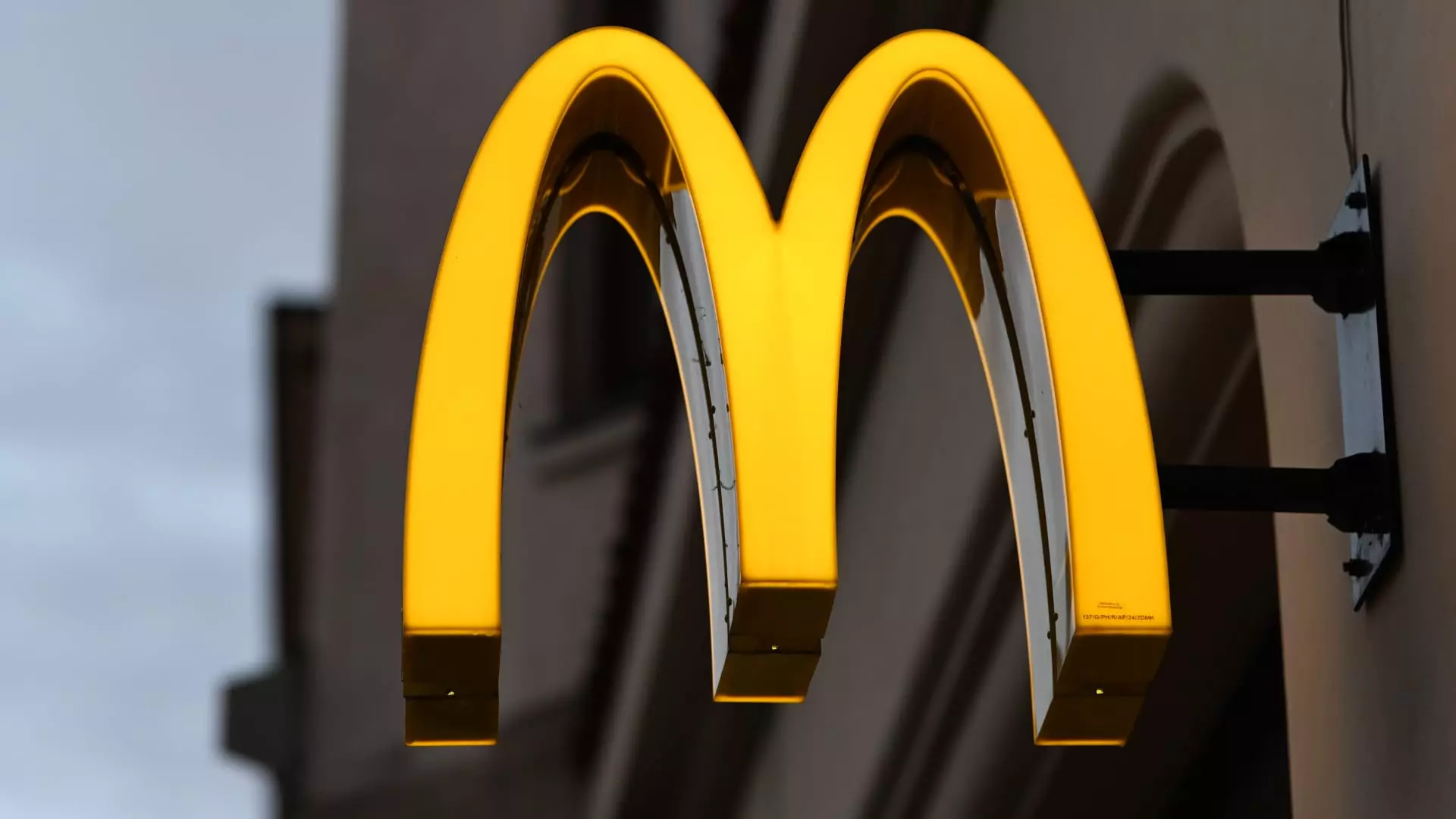Navigating the world of dividend stocks can be an impressive journey for any investor. While many proclaim the virtues of dividend investments as stable income streams, the reality is that not all stocks are created equal. It is crucial to critically analyze the recommendations of market analysts and assess the underlying business fundamentals, especially in turbulent economic climates. For this piece, we’re focusing on three dividend stocks highlighted by Wall Street experts, examining their potential pitfalls rather than their successes.
McDonald’s: A Dividend Aristocrat with Red Flags
When you hear about McDonald’s (MCD), your mind inadvertently connects its golden arches with financial stability. A recent earnings report showed MCD fulfilling market expectations, but don’t let the shiny facade deceive you. Despite being a dividend aristocrat—having increased dividends for a staggering 48 quarters—recent performance raises eyebrows.
The notable decline in U.S. same-store sales, primarily due to an October E. coli outbreak, indicates vulnerabilities that every investor must consider seriously. Although Jefferies analyst Andy Barish maintains a bullish outlook with a price target increase, it is important to temper enthusiasm. The potential for recovery in 2025 is based on optimistic projections, yet McDonald’s will need not just a mere improvement—but significant strides to regain its footing. Assuming past performance dictates future success without acknowledging current headwinds can be risky.
Investors often fixate on dividends without scrutinizing the fundamental integrity of the business. A 2.3% yield may look appealing, but can a company that is battling health crises and stiff international competition sustain that dividend? Consider the real question: what happens should McDonald’s falter further in the U.S. market?
Ares Capital: A Risk-Laden Proposition
Next, we turn our attention to Ares Capital (ARCC), a business development company often touted for its attractive dividend yield of 8.2%. It may seem like a beacon for income-seeking investors, but deeper analysis reveals it to be a high-risk play. A recent earnings report presented mixed results, indicating a slowing momentum that should alarm potential shareholders.
The conservative reduction in core earnings per share projections from analyst Kenneth Lee signals disruption within its operations, raising the question of sustainability. Investors must also pay attention to the frighteningly high non-accrual rate of 1.7%. Sure, it’s lower than the rate seen during the Great Financial Crisis, but what does that tell us about the credit environment today? In an increasingly challenging economic backdrop, a non-accrual rate nearing 2% should not be treated lightly.
Despite high past success rates of Lee’s ratings, relying solely on a firm’s “strong track record of managing risks through the cycle” can expose unsuspecting investors to financial penalties. A visit to the proverbial ideas of past performance never guarantees future outcomes might be prudent in this instance.
Energy Transfer: Promises vs. Performance
Now, let’s discuss Energy Transfer (ET). While it boasts a respectable dividend yield of 6.7% and plans aggressive investment in growth—$5 billion, to be specific—one has to wonder whether all of this is bluster or genuine progress. A glance at their Q4 results shows that they missed expectations. This is troubling for a high-yield stock that should ideally be exhibiting stability, particularly in the energy sector, which has itself been facing price fluctuations and regulatory pressures.
Analyst Gabriel Moreen’s affirmation of his buy rating does carry some merit, especially regarding the company’s extensive experience in certain projects. However, committing significant capital without consistent performance metrics could reflect recklessness rather than growth potential. The underwhelming adjusted EBITDA guidance does little to inspire confidence, and one must ask whether investors are receiving true value or merely a tempting package adorned with glossy financial projections.
The earsplitting silence surrounding management’s past failures in optimization also raises questions. With substantial capital allocated to growth without corresponding performance guarantees, should investors tilt towards caution or abandon ship entirely?
While many investors might be captivated by the allure of high-dividend stocks, those tuning in must recognize the tangled web of risks each carries. Each of these companies presents a tangled mix of potential rewards and imminent risks that warrant sharp scrutiny, especially for anyone placing their financial future in their hands. With the upside may also come considerable downside, and hope alone won’t safeguard your investments.

